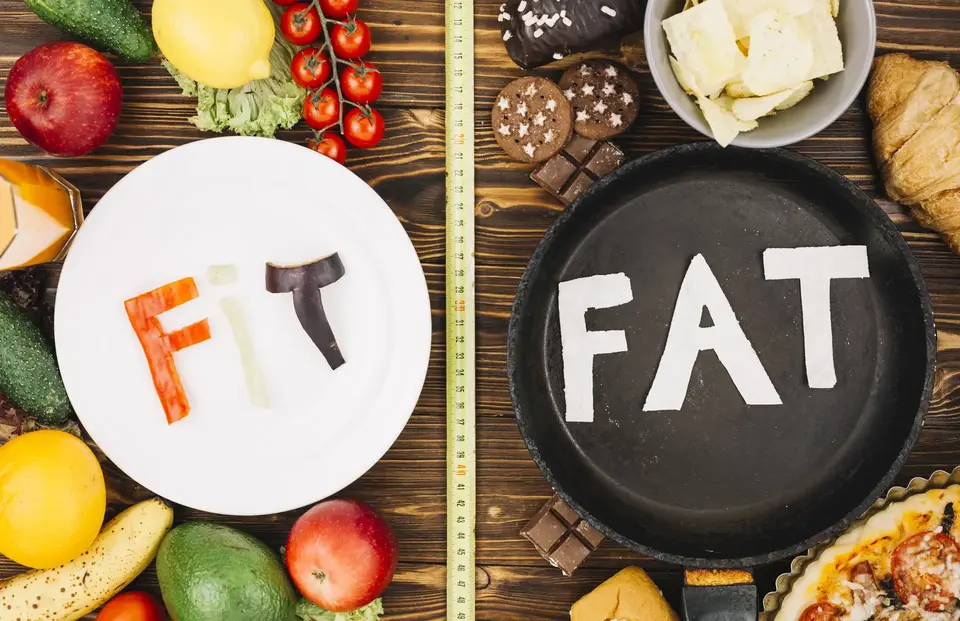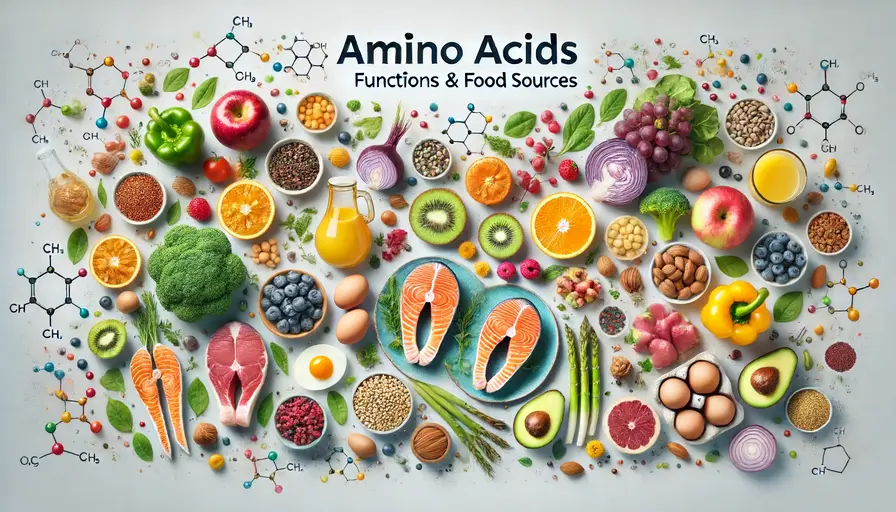Fat. It’s a word that can evoke images of clogged arteries and weight gain. But here’s the surprising truth: fat is a macronutrient, essential for our health! Our bodies rely on fat for a variety of crucial functions, including:
- Hormone Production: Fat plays a key role in the production of hormones that regulate everything from growth and development to mood and reproduction.
- Nutrient Absorption: Certain vitamins, like vitamins A, D, E, and K, are fat-soluble. This means they need fat for proper absorption from the food we eat.
- Body Temperature Regulation: Fat acts like insulation, helping our bodies maintain a healthy internal temperature.
- Energy Source: Fat provides a concentrated source of energy, especially important during periods of physical activity.
However, not all fats are created equal. While fat is an essential nutrient, understanding the different types of fats and their impact on health is crucial.
Next, we’ll delve into the fascinating world of fat categories, focusing on saturated and unsaturated fats.
Demystifying Saturated Fat: Structure, Sources, and Health Effects
Saturated fat has been a subject of much debate in the world of nutrition. But what exactly is it, and how does it impact our health? Let’s dive deeper:
Building Blocks of Fat: A Look at Structure
All fats, including saturated fats, are made up of building blocks called fatty acids. These fatty acids consist of carbon, hydrogen, and oxygen atoms linked together in a specific chain. The key difference between saturated and unsaturated fats lies in the arrangement of these atoms:
- Single Bonds: The Hallmark of Saturated Fat – Saturated fats contain only single bonds between their carbon atoms. Think of these bonds as strong connections holding the molecule together in a rigid structure.
- Double Bonds: The Flexibility of Unsaturated Fat (We’ll explore unsaturated fats in more detail later!) – In contrast, unsaturated fats have at least one double bond between carbon atoms. This double bond creates a bend in the molecule, making it more flexible compared to saturated fats.
Solid or Liquid? The Impact of Structure on Form
The tight packing of hydrogen atoms due to single bonds in saturated fats makes them more solid at room temperature. Examples include butter, coconut oil, and lard, which have a firmer consistency.
Unsaturated fats, with their double bonds and flexible structure, tend to be liquid at room temperature, like olive oil and canola oil.
Beyond the Basics: A Breakdown of Saturated Fat Sources
Now that we understand the structure, let’s explore some common sources of saturated fat:
- Animal Products: Saturated fat is predominantly found in animal-based foods like red meat, poultry with skin, full-fat dairy products (butter, cheese, whole milk), and lard.
- Tropical Oils: Certain plant-based oils, like coconut oil and palm oil, contain high levels of saturated fat.
Important Note: Many foods contain a mix of different fat types. For example, butter and olive oil both have saturated and unsaturated fats, but butter has a significantly higher proportion of saturated fat.
A Spectrum of Saturated Fat Types:
While often grouped together, there are actually different categories of saturated fat based on the length of their carbon chain:
- Short-chain: Found in dairy products, like butter and cheese.
- Medium-chain: Found in coconut oil, and potentially have different health effects than other saturated fats.
- Long-chain: Found in red meat and full-fat dairy products.
- Very long-chain: Found in smaller amounts in meat and dairy products.
The effects of these different types of saturated fat on health are still being researched.
In the next section, we’ll explore the health implications of saturated fat consumption and how to make informed dietary choices.
Saturated Fat and Health: Unveiling the Complexities
Saturated fat. For decades, it’s been demonized as a heart health villain. But recent research paints a more nuanced picture. Let’s explore the science behind saturated fat and its impact on our well-being.
A Change in the Narrative: Rethinking Saturated Fat and Heart Disease
Since the 1960s, health organizations have advised limiting saturated fat intake to protect against heart disease. This recommendation stemmed from its observed ability to raise LDL (“bad”) cholesterol, a known risk factor.
However, newer evidence suggests a more complex story:
- Emerging Doubt: Multiple research reviews haven’t found a clear link between total saturated fat intake and increased heart disease risk.
- A Global Study’s Insights: A large, 10-year study following over 135,000 people across 18 countries revealed no association between saturated fat intake and heart disease, heart disease-related death, or heart attack.
- Fat is Not a Monolith: A recent review suggests different types of saturated fat might have varying effects. Long-chain saturated fatty acids (LCSFAs) from sources like red meat and dairy might elevate heart disease risk, while short-chain and medium-chain saturated fatty acids (SCFAs and MCFAs) from some dairy products and coconut oil might have neutral or even positive impacts.
Context Matters: Diet Quality Plays a Role
The impact of saturated fat on heart disease risk isn’t solely dependent on the amount consumed. It’s also influenced by what replaces it in the diet.
- Healthy Swaps vs. Unhealthy Substitutions: Replacing saturated fat with nutritious options like vegetables, fruits, whole grains, and fish is far different from swapping it with processed foods high in added sugar and unhealthy fats. The latter scenario would likely pose a greater risk to heart health.
- Flawed Research? Experts argue that some earlier research linking saturated fat directly to heart disease risk might be flawed due to a lack of consideration for overall diet quality.
The Need for More Research: Unanswered Questions Remain
While the link between saturated fat and heart disease is under debate, more high-quality research is needed to solidify our understanding.
Beyond Heart Health: Other Health Concerns
While the saturated fat and heart disease story is evolving, diets high in saturated fat might be linked to a few other health concerns:
- Cancer Risk: Some research suggests a possible link between high saturated fat intake and an increased risk of certain cancers, like colorectal cancer.
The takeaway? While saturated fat might not be the heart health villain it was once thought to be, a balanced, nutritious diet is still crucial for overall well-being. Stay tuned for the next section, where we’ll explore healthier fat options and how to incorporate them into your diet!
Unsaturated Fats: Unveiling the Good Guys of the Fat World
Unsaturated fats – these are the fats your heart can sing praises about! Unlike saturated fats, unsaturated fats boast a structure that makes them champions for heart health and overall well-being. Let’s delve into the fascinating world of unsaturated fats and their power-packed benefits.
Double Bonds: The Key to Unsaturation
Recall from our previous discussion that fats are built with carbon atoms linked together. What differentiates saturated and unsaturated fats lies in the arrangement of these bonds:
- Saturated Fats: All Singled Up – Saturated fats feature only single bonds between carbon atoms, creating a rigid structure.
- Unsaturated Fats: The Power of the Double Bond – Unsaturated fats, the true stars of this show, have at least one double bond between carbon atoms. This double bond introduces a bend in the molecule, making it more flexible compared to saturated fats.
Two Main Unsaturated Fat Families: Monounsaturated and Polyunsaturated
The world of unsaturated fats boasts two prominent families, each with its own unique characteristics:
- Monounsaturated Fats: The Solo Double Bond – Monounsaturated fats, often referred to as MUFAs, contain just one double bond between carbon atoms. Think of them as the “singles” of the unsaturated fat world.
- Polyunsaturated Fats: Two’s Company, Three’s a Crowd (or More!) – Polyunsaturated fats, or PUFAs, go big with two or more double bonds ” between carbon atoms. Imagine them as the “twosomes, threesomes, and more” of the unsaturated fat group.
A Culinary Tour of Unsaturated Fat-Rich Foods
Now that we understand the structure, let’s embark on a delicious journey to explore some foods brimming with these heart-healthy fats:
- Monounsaturated Fat Powerhouses: Craving a heart-healthy snack? Look no further than olives, avocados, nuts (like almonds and cashews), and canola oil. These are all champions of monounsaturated fats.
- Polyunsaturated Fat Paradises: For a dose of polyunsaturated goodness, incorporate walnuts, sunflower seeds, flax seeds (and flaxseed oil!), fish (especially fatty fish like salmon), soybean oil, and safflower oil into your diet.
Remember, most foods are a mixed bag! While these examples highlight foods rich in specific unsaturated fats, most foods contain a combination of different fat types, including monounsaturated, polyunsaturated, and even some saturated fats.
Unsaturated Fats: Champions for Heart Health and Beyond
We’ve explored the structure and delicious sources of unsaturated fats – the good guys of the fat world! But why are they so beneficial for our health, especially compared to saturated fats? Let’s dive into the science behind their heart-protective powers and other wellness benefits.
Monounsaturated Fats: Lowering Heart Disease Risk
- Olive Oil: A Heart-Healthy Hero: Studies like one involving nearly 93,000 Americans, have shown that consuming olive oil, rich in monounsaturated fats (MUFAs), is associated with a 14% lower risk of heart disease compared to those who don’t consume it regularly.
- Plant-Based MUFAs Shine Even Brighter: Another study with over 93,000 participants revealed that plant-based sources of MUFAs, like nuts and avocados, were linked to a significantly lower risk of death from heart disease and cancer compared to saturated or animal-based MUFAs.
- Swapping Strategies for Heart Health: Research suggests that replacing saturated fats and refined carbohydrates with MUFAs from plant sources can significantly reduce heart disease risk. This highlights the importance of making smart dietary swaps for optimal heart health.
Polyunsaturated Fats: Beyond Heart Health – The Power of Anti-Inflammation
- DHA and EPA: The Anti-Inflammatory Duo: Polyunsaturated fats (PUFAs) include superstars like docosahexaenoic acid (DHA) and eicosapentaenoic acid (EPA), found abundantly in fatty fish. These superstars boast powerful anti-inflammatory properties, playing a crucial role in overall well-being.
Remember, a balanced diet is key. While unsaturated fats offer a multitude of benefits, moderation is important. We’ll explore healthy fat consumption recommendations and dietary tips in the next section!
Finding Your Fat Balance: Dietary Recommendations and Personalized Strategies
We’ve explored the different types of fats and their impact on health. Now, let’s navigate the world of dietary fat recommendations and discover how to find the fat balance that works best for you.
General Guidelines: AMDR and Fat Intake
- AMDR: A Roadmap for Macronutrients: Health organizations like the Academy of Nutrition and Dietetics set general recommendations (the Acceptable Macronutrient Distribution Range or AMDR) for macronutrient intake, including fat. These aim to provide adequate nutrition while reducing chronic disease risk. The AMDR suggests a range of 20-35% of daily calories from fat. Remember, fat is the most calorie-dense macronutrient, providing 9 calories per gram.
- A Focus on Saturated Fat: The American Heart Association emphasizes limiting saturated fat intake for heart health. Their recommendation is to keep saturated fat below 6% of your total daily calories.
Important Note: General Guidelines Aren’t One-Size-Fits-All
These recommendations are a starting point, not a rigid rulebook. Here’s why personalization is key:
- Lower-Carb, Higher-Fat Diets: Emerging Benefits: Research suggests potential benefits of lower-carb, higher-fat diets, including improved blood sugar management and weight loss.
- Individual Needs Matter: Your calorie needs, underlying health conditions, and health goals all influence the ideal fat intake for you.
Finding Your Personalized Fat Balance
- Listen to Your Body: Pay attention to how you feel on different diets. Some people thrive on higher-fat plans, while others feel better with a more moderate fat intake.
- Seek Professional Guidance: A registered dietitian or healthcare provider can help you determine your macronutrient needs based on your unique situation. They can also create a personalized dietary plan that incorporates healthy fats for optimal well-being.
Remember: There’s no single “best” fat intake for everyone. Experiment, gather information, and find the approach that fuels your body and supports your health goals.
Fat Management Tips: Swapping Saturated for Unsaturated Goodness
We now understand the importance of incorporating healthy fats into our diet, with unsaturated fats taking center stage. But how do we translate this knowledge into practical meal planning? Here are some tips to help you promote unsaturated fats and reduce saturated fats for a heart-healthy and delicious lifestyle:
Embrace the Cooking Powerhouse: Healthy Fats for Everyday Use
- Olive Oil and Avocado Oil: Your Kitchen Companions: Ditch unhealthy cooking fats! Opt for olive oil and avocado oil, champions of monounsaturated fats. Their high smoke points make them perfect for everyday cooking methods like baking, sautéing, and even light stir-frying.
Reduce the Risk Factors: Saying No to Harmful Fats
- Fried Foods: The Culprit of Trans Fats: Give fried foods the boot! These sneaky sources of trans fats are detrimental to your health, increasing the risk of heart disease and cancer. Replace them with healthier fat options like fatty fish, rich in anti-inflammatory omega-3 fats, or plant-based fats from sources like avocados.
Red Meat: A Matter of Moderation
- Limiting Red Meat and Prioritizing Heart-Healthy Protein: Red meat, like beef, is high in LCSFAs, which may not be the best for your heart. To reduce your risk of heart disease, try limiting your red meat intake and explore alternative protein sources. Fatty fish is a fantastic swap, bursting with anti-inflammatory omega-3 fats that benefit your heart and overall well-being.
Go Green (and Nutty)! Plant-Based Fat Power
- Plant-Based Fat Powerhouses: Avocados, Nuts, and Seeds: Embrace the goodness of plant-based fats! Avocados, olives, nuts, and seeds are all excellent sources of unsaturated fats. Research suggests these delicious options promote overall health and may lower your risk of chronic diseases.
Balance is Key: Fat in a Healthy Diet
- Mindful Moderation and a Balanced Plate: Even high-fat foods can have a place in your diet, but moderation is key. Pair them with other nutritious foods like fiber-rich fruits and vegetables, beans, and protein sources to create a well-rounded and balanced meal.
Unsure About Your Fat Intake? Seek Guidance!
- Consulting a Registered Dietitian: If you’re unsure about how much fat is right for you, don’t hesitate to seek guidance from a healthcare professional like a registered dietitian. They can personalize a dietary plan that considers your unique needs and helps you navigate the world of healthy fats with confidence.
Incorporating healthy fats is essential for optimal health. By following these tips and personalizing your approach, you can create a delicious and nutritious dietary pattern that fuels your body and keeps your heart happy!
The Fascinating World of Fats: A Quick Rundown
Fats: not all villains, but definitely not all created equal! Here’s a cheat sheet to navigate the world of fats and make informed dietary choices:
The Two Main Fat Teams:
- Saturated Fats: These fats tend to be solid at room temperature and may raise LDL (“bad”) cholesterol. Think butter, red meat, and coconut oil.
- Unsaturated Fats: The good guys! They’re liquid at room temperature and have been shown to benefit heart health. Think olive oil, avocados, nuts, and fatty fish.
Health Effects in a Nutshell:
- Saturated Fat: Moderate intake is likely okay, but some research suggests limiting it for potential heart health benefits.
- Unsaturated Fat: Embrace these heart-protective fats! They may help lower LDL cholesterol and reduce the risk of heart disease.
Focus on Unsaturated Fat Sources:
- Nuts and Seeds: A delicious and portable snack packed with unsaturated goodness.
- Fatty Fish: Salmon, tuna, and sardines are champions of omega-3 fatty acids, superstars for heart health.
- Olive Oil: A versatile cooking oil rich in monounsaturated fats, perfect for drizzling, sauteing, and baking.
Remember:
- While some recent research questions the direct link between saturated fat and heart disease, focusing on unsaturated fats is a safe bet for promoting overall health.
- Balance is key! Even healthy fats should be enjoyed in moderation as part of a well-rounded diet.
Want to dive deeper? Explore additional resources to learn more about specific types of fats and their unique health benefits.




